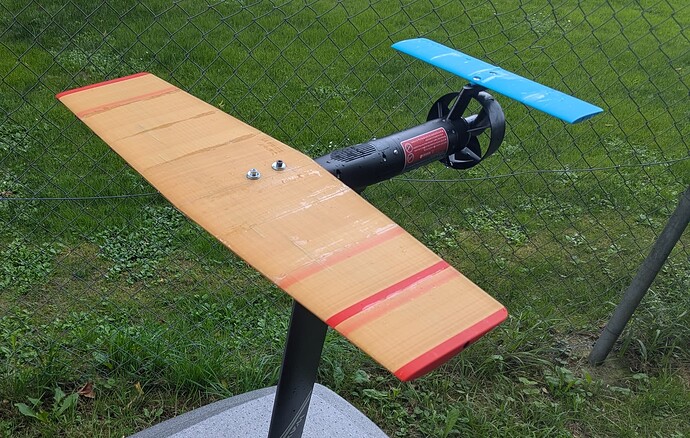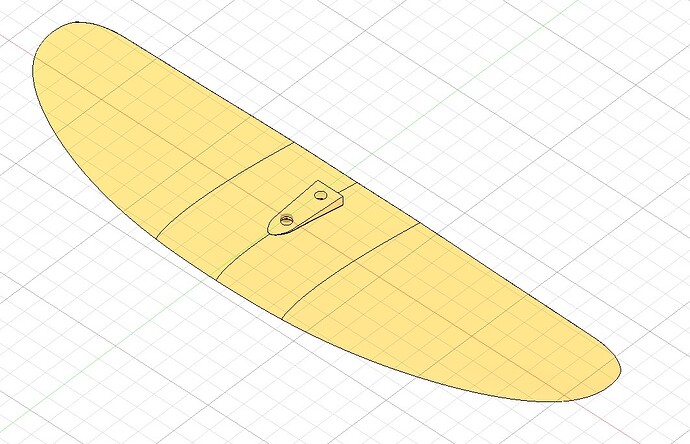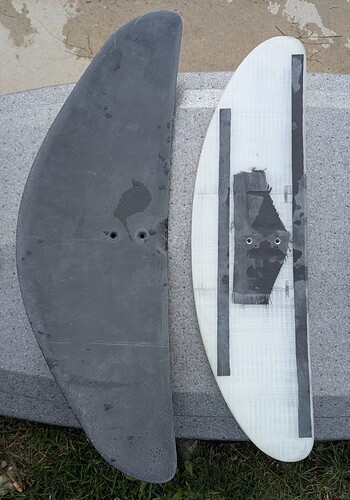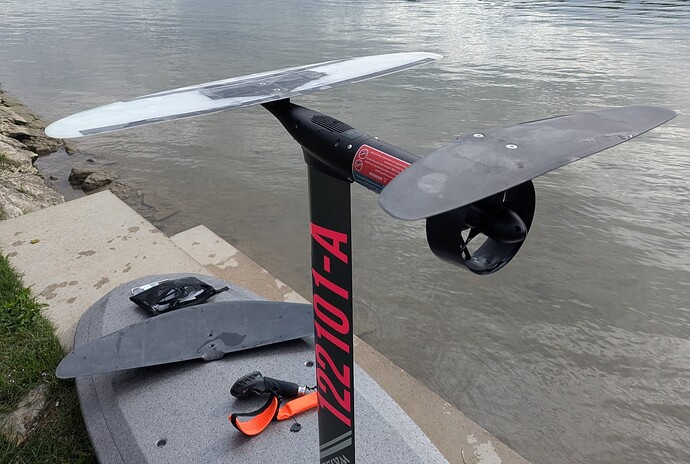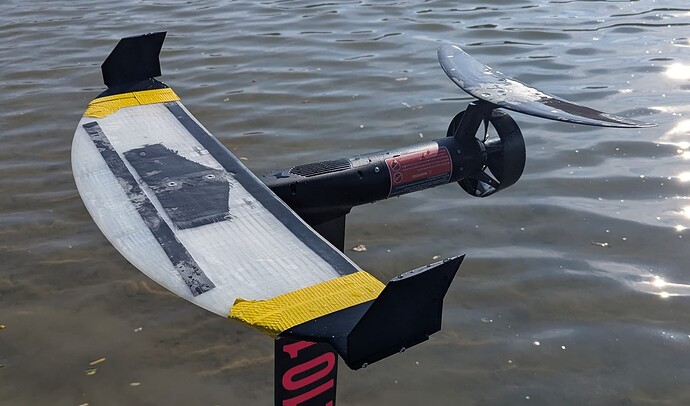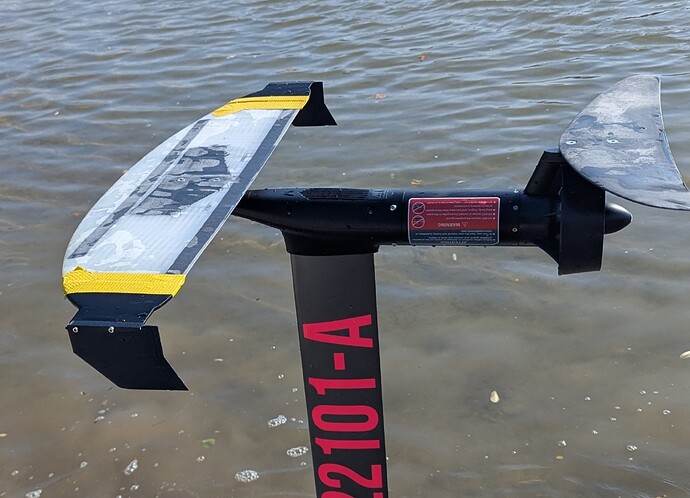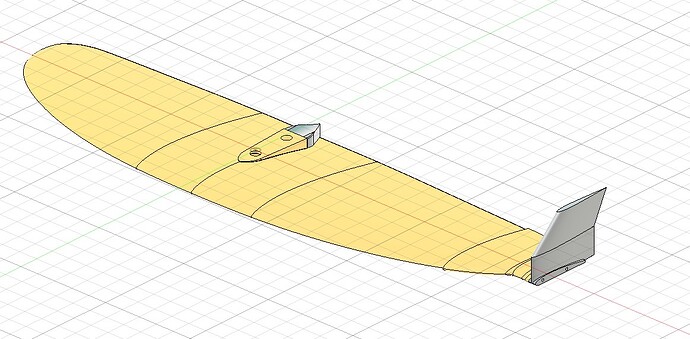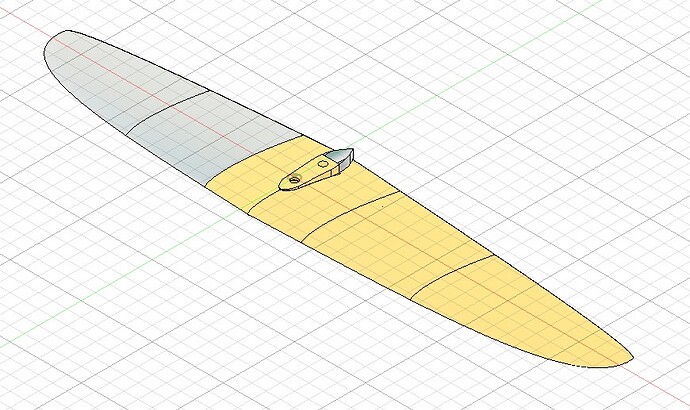(images below)
Dear all, I am having fun playing with my e-foil (Waydoo Flyer One Plus with Explorer wing) and designing wings for it. The aim is not to make the next best hydrofoil, but I would like to experiment and play and understand/validate the physics involved. And at least for me, it is much more fun to fly on your own DIY foil, than to ride a commercial one.
I started with a very simple, flat Clark-Y wing with no twist and identical area as the original Waydoo wing. It was flying ok, but requiring more power for the same speed (no surprise). The 3D print didn’t survive a crash. This showed me that general assumptions on airplane wings are also true for the efoil (actually this should be clear, but I wanted to validate this).
The next one uses about 2° wingtip twist (in airplanes, this enhances flight characteristics during turns and makes stall behaviour smoother), some anhedral (less than the original Waydoo explorer wing) and a RG-15 airfoil (this is one of the most popular airfoils for model aircraft flying at similar Re). The 3D print was coated with glass fibre and some carbon.
This wing has, as far as I can tell, slightly higher top speed at the same throttle setting. The rest, including turning and slow speed characteristics near stall, feels very similar. But the RG-15 wing is way more agile on roll. After my feet got used to this “loose feeling” (feels a bit like a loose snowboard binding), I like it better than the original wing.
But I wonder why the roll agility has increased. My theory was the following:
In my 30 kg e-foil, the pivot point for roll etc. lies in the centre of gravity, which is approximately located inside the surfboard. When looking from left or right side at the efoil, the projected area under this pivot is responsible for roll stability. More negative dihedral increases the projected area when viewed from the side, and therefore increases roll stability.
To validate this, I did a quick test and attached winglets to the wing (the effect of winglets on roll stability is pretty similar to dihedral on airplanes). I designed the winglets in a way that they can be pointing upwards or pointing downwards.
If only the projected area counts, then mounting the winlets up or downwards should make hardly any difference. But the test flights showed that:
- Winglets pointing downwards made roll very stable, like on rails
- Winglets pointing upwards made roll very unstable, pretty difficult to control
This is something I don’t really understand. I tried to find information in the internet, but it is difficult to find some real information within all the marketing blabla on hydrofoils.
Has anyone some ideas on this?
P.S.: As I said, I believe there’s no magic involved in designing the first 90% of wing performance. The basic knowledge from model aircraft design flying at similar Re might be sufficient. There might be some magic involved in the remaining 10%, but I don’t currently care about that last 10%.

